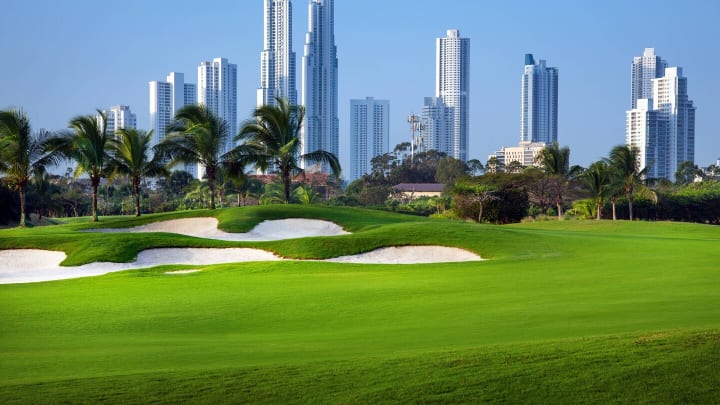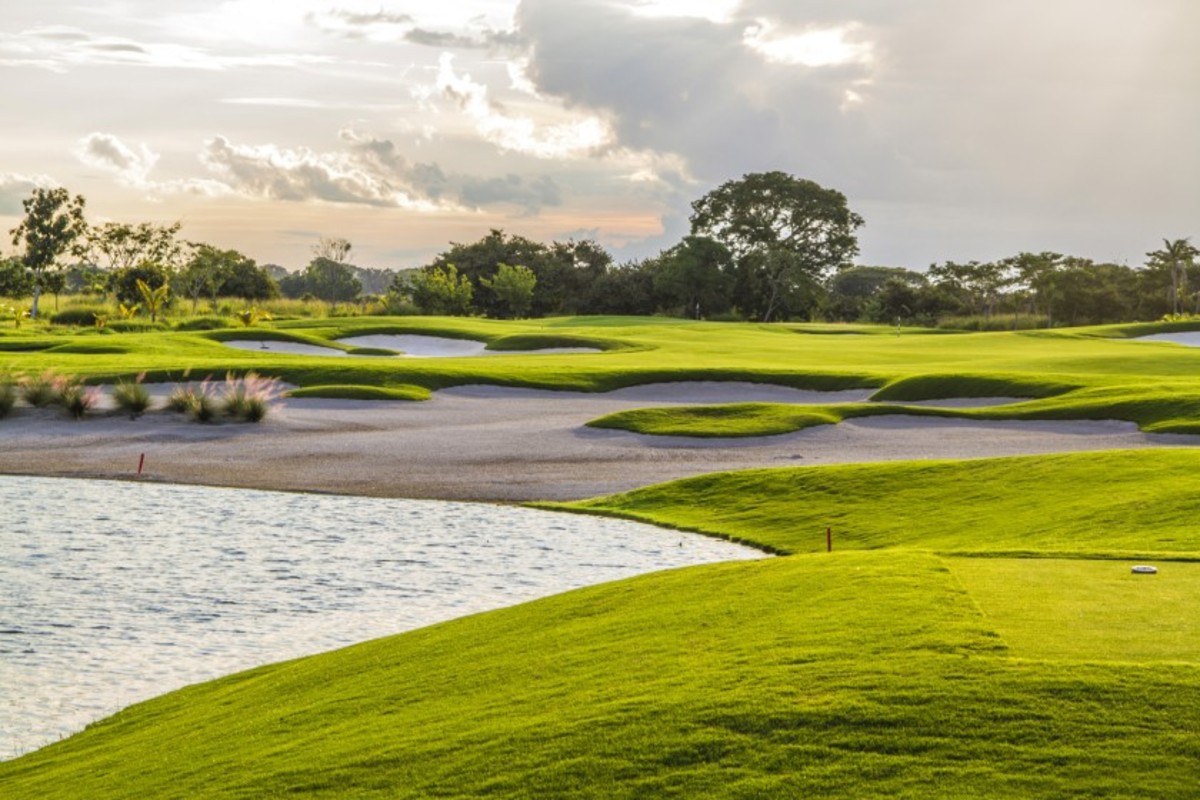Heading south for winter break? Try Panama | Where to Golf Next

As winter’s misery will soon begin to spread across the U.S., it’s time to look south for your next golf getaway — but maybe not in the usual Caribbean or Mexican locales.
How about Panama?
You know, the place with the canal.
The United States’ presence there for 115 years left the country with a strong golf legacy. In fact, the country had four courses within 12 years of the Panama Canal’s opening in 1914. Today, Panama totals 14 courses and is a stop on both the Korn Ferry Tour and the PGA Tour LatinoAmerica.

The golf season there is just starting. December marks the end of the monsoons on the Isthmus of Panama. Through April expect a daily weather forecast of partly cloudy, 85 degrees with a chance of spot showers.
Getting there is a snap. Major airlines operate nonstop flights to Panama City from Chicago, Miami, Houston, Los Angeles and San Francisco. Advance-purchase roundtrip economy fares for travel in mid-January recently ranged from $328 to $750.
Panama lies in the Eastern Standard Time Zone, so there’s little to no jet lag, and because it’s so close to the Equator, it gets 11 and a half to 12 hours of daylight year-round.
The place to start a Panamanian golf trip is the Santa Maria Hotel & Resort, a Marriott Bonvoy property in Panama City. The resort’s Jack Nicklaus-designed, par-72 course plays between 5,258 and 7,000 yards from four sets of tees. It’s essentially a private club, accessible only by members, guests playing with members and guests staying at the hotel a mere 50 yards from the first tee.
The resort’s 182-room, five-star hotel is so close to Tocumen International Airport – barely a 10-minute drive away – you can be on the first tee less than an hour after clearing customs.
The golf course, which opened in spring 2018, has all the Nicklaus trademarks — plenty of right-hand doglegs, grass bunkers around the putting surfaces and devilish multi-level greens.
“It’s very friendly, and truthfully, the greens are the course’s only defense,” says Curaçao-born Oliver Riding, Santa Maria’s director of golf.
Construction cranes, signs of Panama City’s booming economy, dot the skyline. All the roadways nearby are new. The half dozen gleaming hi-rises framing most views on the course, Riding says, weren’t there just three years ago.
A round at Santa Maria is $175, but packages available in mid-January through Marriott’s website start at $239 a night and include lodging and breakfast for two, spa discounts and a round of golf and cart for one player for each night’s stay.
Off the course, a trip to the Panama Canal’s Miraflores Locks complex is a must. There you’ll see cargo ships — hundreds of feet long stacked with thousands of truck-sized shipping containers — rising and falling in the locks like super-sized bathtub toys. There’s an interactive museum detailing the canal’s history and engineering. The Miraflores Locks is a 30-minute car ride from the Santa Maria.
If in Panama for more than a few days, it’s worth the 69-mile drive west along the Pacific coast to play Panama’s other Nicklaus course, the Buenaventura Golf & Beach Resort, near the town of Rio Hato in Coclé Province.
In contrast to the urban Santa Maria, Buenaventura is a pastoral seaside destination. The hotel, also affiliated with Marriott, and the golf course, also run by Troon, are focal points of an upscale retirement and second-home community.

The par-72 course has four sets of tees that play from 5,822 to 7,383 yards. In contrast to Santa Maria, Buenaventura’s salt-water tolerant Paspalum Platinum greens are forgiving and the fairways generous. Poincianas, brilliantly red flowering trees, line the course’s margins. Buenaventura hosted a LatinoAmerica Tour event in March.
Stay-and-play packages at the 118-room Spanish colonial-style hotel start at $349 a night in mid-January and include unlimited golf and breakfast for two. The resort can arrange round-trip transportation between Buenaventura and the Santa Maria resort or Tucomen International.
Although the language of Panama is Spanish, you’ll have no trouble getting by in English. The currency, the Balboa, is permanently pegged to the U.S. dollar — in fact, Panama prints no paper money. The dollar has been legal tender in Panama since 1904.
The mix of old and new in Panama City is striking. While many of the buildings in the Casco Viejo, or Old Town, date from the 1600s, Panama City ranks in the top 50 cities of the world in the number of skyscrapers. With its narrow cobblestone streets, the old section has the look and feel of Old San Juan, Puerto Rico, while the banking district of downtown could easily be mistaken for Chicago’s North Michigan Avenue.
The Casco Viejo’s 400-year-old pastel-painted buildings are rapidly being transformed into trendy shops, clubs and restaurants — the focal point of a vibrant social scene worthy of a city that shrugged off U.S. colonialism decades ago and has earned itself the nickname of the capital of Central America.
